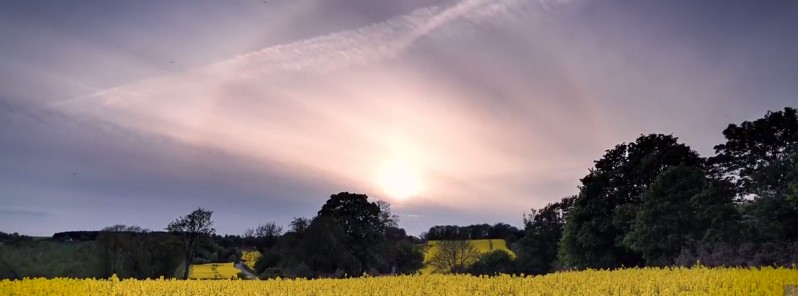Metamorphosis by Adrien Mauduit

In nature, there is nothing more spectacular than the Spring. Funny enough, animals and plants are way quicker to get back to being active than to fall into dormancy in the Fall. It sometimes takes months for deciduous plants to lose all their leaves, whereas they can sprout again from buds within days, sometimes hours if conditions are right. More than a simple urge to do so, they commence an interminable battle for survival. It’s a veritable sprint start to get access to the most resources needed to achieve the eight functions of life like reproduction, respiration, nutrition… As soon as the signal is given, all organisms burn out every bit of energy left they have from the long winter to thrive and cross the finish line before the others. This signal might not be what you think…
The race preparations actually start long before what we call the spring equinox. A couple of months earlier at the winter solstice, as many creatures still brave extremely cold temperatures in any way they can, the days are getting longer again. This is the signal. It might not have an influence on temperature yet, but all living things can feel it as their life cycle is greatly dependent on the energy from the sun. Although Scandinavian landscapes are still covered in ice and snow, life is slowly getting more active. More light induces the production of hormones in many animals and plants. Trees and bushes slowly grow their buds again and songbirds are starting to sing and square off for territory. Next thing you know, snowdrop flowers are piercing through the snow. In many European countries, they are one of the first angiosperms to bloom and a well-known tell-tale sign that spring has finally begun.
That’s when the blitz metamorphosis actually begins. In Denmark, March is still a cold month and the nights are still long, but April is when the real fun begins. By gaining up to six minutes longer every 24 hours, days are getting noticeably longer and night shorter at an incredible speed. This has many cascade consequences leading to such a remarkable change. The summed temperature absorbed by plants and seeds for them to sprout will reach its full potential sooner than you think. All it takes is two to three days between 10 and 15 degrees and sunshine, and most plants will turn on full speed ahead. Light and temperature induced growth hormone production signals the intake of water, the use of food reserves for a fast growth. In a matter of days sometimes, bare branches turn completely light green, and the forest that once was see-through becomes completely impenetrable. March and April are also the best months for night sky observations. As the nights are still dark and relatively long, the milky way core, along with Saturn is again visible after the long winter, rising to the southeast and reflecting nicely on the still Baltic waters. Jupiter is also a very noticeable object that outshines the whole sky, sometimes coming close to the Moon for a one-time exclusive ballet. Northern lights are a spectacle that can also be witnessed in these times, sometimes putting on extraordinary colorful and bright display.
At the end of April in higher mid-latitudes like Denmark, another strange phenomenon happens. Animals, plants, landscapes, even our way of life- are transformed, and now the night sky? As the Earth continues its course around the Sun on its elliptical orbit, its tilt has an effect on the curve of the Sun back on Earth. At this point of time, the Sun never goes further down than 18 degrees below the horizon, meaning that there is no longer dark nights. This phenomenon, called bright nights or lyse nætter in Danish tremendously alters our night skies look like. The Milky Way and auroras are less and less visible each day, washed out by the constant twilight. Around mid-May, these two events can be crossed out any astrophotographer’s list as the night are too bright. However, around the end of May, the Earth’s upper atmosphere is getting cold enough to witness the mesmerizing night-shining clouds or noctilucent clouds, reflecting the sunlight from below the horizon.
The whole point of the movie was to capture this metamorphosis. From plants to animals and even our night sky, everything changes drastically. It has been very quick and dramatic this year as the winter cold lingered until late April over south Scandinavia. It just took four days of sheer and unusual warmth for everything to spring again!

Featured image, caption and video credit: Adrien Mauduit

Thank you for all your interesting, informative articles! Living on the side of a volcano has greatly increased my sensitivity to the living Earth.